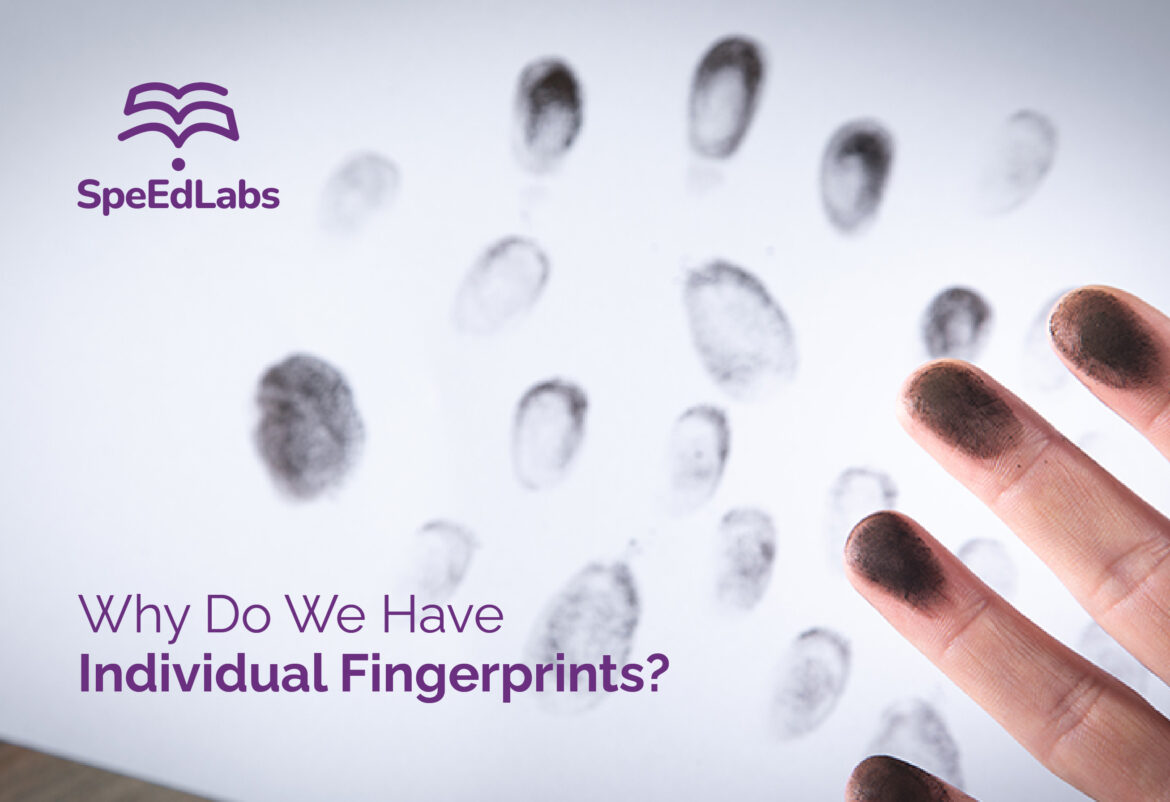What is a fingerprint, you may wonder? The fingerprint is one of the most unique things about every person. The fingerprint is the second thing in the line that is unique and individual after your eyeball. Examine the lines on your fingertips carefully. The minute ridges and patterns on each of your fingers are your fingerprints. They are called “friction ridges.” You have friction ridges on your fingertips, palm, toes, and soles! It’s hard to see, but they literally stick up above the rest of the skin.
A fingerprint is created when your fingers touch a glass or when your fingers are inked and pressed against a piece of paper. If you press a finger against an ink pad and paper, the lines and ridges on your finger will be printed. This is your fingerprint. That means no one else has the same lines as your fingers do. The fingerprint remains the same throughout life. It is possible to identify a person using their fingerprints because of their unchanged individuality.
Is it possible for twins to have the same fingerprint? Many people keep asking this question. It turns out that even identical twins have different fingerprints. Hence, in this article, we are about to discover whether fingerprints are unique.
How are Fingerprints Formed? Can Fingerprints be Changed?
There is no single cause for the unique fingerprint design you have. In reality, it is the result of both your genes and your environment. This is called ‘multifactorial inheritance.’
Friction ridges can form in various patterns, such as arches or whorls. You can be prone to possess the same pattern in your fingers as your parents. This is due to the fact that genes, which you inherit from your parents, provide the fundamental structure.
The fingerprints of a person are formed when they are a tiny foetus developing in their mother’s womb. By the time you were 6 months old until 3 months before you were born the faint lines on your fingers and toes had fully developed. Nobody is entirely aware of the exact process that forms fingerprints, but scientists do agree that it starts around the 10th week of pregnancy.
Fingerprints can become inaccurate for personal identification when subjected to repeated activity, such as bricklaying. Similar to how some horrifying incidents have seen criminals deliberately burning off their fingerprints to evade detection. Nonetheless, the fingerprints will typically grow back over time since they are imprinted in deeper skin layers.
Can Identical Twins Share the Same Fingerprints?
Twins might be difficult to distinguish, but can we determine who’s who by just looking at their fingertips?
Developmental and genetic factors both contribute to the production of fingerprint patterns. The fingerprint pattern is influenced by both hereditary and unique physical variables.
Hence, even if identical twins share a similar genetic heritage, the pressure the foetus experiences while in the womb might change their fingerprints. The fingerprints can even change depending on the length of the umbilical cord!
Hence, although identical twins could fool everyone with their appearance, they wouldn’t succeed in tricking the fingerprint test.
Some Interesting Facts about Fingerprints
-
Some Individuals Lack them from Birth
There are three genetic disorders that can prevent fingerprint development; Naegeli Franceseschetti Jadassohn Syndrome, Dermatopathia Pigmentosa Reticularis, and Adermatoglyphia.
-
There were Bone Measurements before Fingerprints
Is each fingerprint unique, you might ask? Yes, is the answer. Each fingerprint is distinctive to that person. Because of this, fingerprints are used to identify crime and criminals. Police officers used to identify criminals using their body measurements prior to that, though, when science had not advanced. A person’s distinctive measurements were taken using photographs.
-
Fingerprints are Very Long-Lasting
Dead bodies are identified by their fingerprints. Fingerprints stick around even when humans die. A baby’s fingerprints remain the same from birth until death. They are durable since hardly anything alters fingerprints.
-
Koalas Have Fingerprints Too
Koalas, gorillas, and chimpanzees all have unique fingerprints, just like humans. Experts believe that because these animals lived in the tree, fingerprints may have evolved in them. Particularly koalas’ fingerprints resemble those of people.
Why Do We Have Fingerprints?
There are two theories as to why people have fingerprints. The first is that fingerprints help to enhance grip and touch sensibility. Ronald Ennos has conducted study on the idea of improving grip. Perhaps fingerprints function similarly to automobile tyres. They can verify the surface they touch because to their flexibility. Similarly, fingers can survive frictions or any touch because they are formed with fingerprints.
- The quality of recognised fingerprints can be affected by too much salt or seawater.
- The quality of fingerprints is improved by alcohol-free hand sanitizer.
- The fingerprints of identical twins are not exactly the same. They are unique.
- The discovery of fingerprints is credited to British scientist Francis Galton.
- Black fingerprint powder usually contains the following ingredients: rosin, lampblack, and black ferric.
Conclusion
This very much conveys the fundamentals of what a fingerprint is and how it works. The way that our fingers are constructed and our fingerprints are both quite distinctive. The human body is interestingly made. Every part has a purpose. Students will be well-versed in the subject of fingers and fingerprints by the time they get to this section of the blog.
